La lectura de Fitting the Pattern en el aula

- Statement of Responsibility:
-
Gregorio Robledo, Yolanda de
- Autor:
- Format:
-
Artykuł z czasopisma
- Język:
-
Spanish; Castilian
- Forma / Gatunek:
-
text (article)
- Opublikowane:
-
2020
- W:
-
Álabe: Revista de Investigación sobre Lectura y Escritura ISSN 2171-9624 Nº. 21 (enero - junio), 2020
- Hasła przedmiotowe:
- Adnotacja:
-
The emergence of new electronic devices and apps with new literature pieces has opened up new possibilities in the field of Literature Theory. This paper studies digital reading. In particular, this research identifies some elements showing that reading a digital work of literature differs from a printed one. This challenges teachers to provide students with new skills and codes. To approach this, this paper explores the main characteristics of the narrative piece Fitting the Pattern, written by Christine Wilks. Finally, this paper proposes a new reading practice application using the mentioned narrative piece. Therefore this learning tool is intended for digital reading, English Second Language learning, and cultural studies among undergraduate students of English Literature.
| LEADER | 03028nab a22003370u 4500 | ||
| 001 | spart12647 | ||
| 003 | ES-LoD | ||
| 005 | 20230516100051.0 | ||
| 008 | 230516s2020\\\\sp\\\\\\\\\\\\\\\\\\spa\\ | ||
| 022 | \ | \ | |a 2171-9624 |
| 041 | \ | \ | |a spa |
| 100 | \ | \ | |a Gregorio Robledo, Yolanda de |
| 245 | \ | \ | |a La lectura de Fitting the Pattern en el aula |c Gregorio Robledo, Yolanda de |
| 260 | \ | \ | |c 2020 |
| 520 | 3 | \ | |a The emergence of new electronic devices and apps with new literature pieces has opened up new possibilities in the field of Literature Theory. This paper studies digital reading. In particular, this research identifies some elements showing that reading a digital work of literature differs from a printed one. This challenges teachers to provide students with new skills and codes. To approach this, this paper explores the main characteristics of the narrative piece Fitting the Pattern, written by Christine Wilks. Finally, this paper proposes a new reading practice application using the mentioned narrative piece. Therefore this learning tool is intended for digital reading, English Second Language learning, and cultural studies among undergraduate students of English Literature. |
| 538 | \ | \ | |a application/pdf |
| 540 | \ | \ | |a LICENCIA DE USO: Los documentos a texto completo incluidos en Dialnet son de acceso libre y propiedad de sus autores y/o editores. Por tanto, cualquier acto de reproducción, distribución, comunicación pública y/o transformación total o parcial requiere el consentimiento expreso y escrito de aquéllos. Cualquier enlace al texto completo de estos documentos deberá hacerse a través de la URL oficial de éstos en Dialnet. Más información: https://dialnet.unirioja.es/info/derechosOAI | INTELLECTUAL PROPERTY RIGHTS STATEMENT: Full text documents hosted by Dialnet are protected by copyright and/or related rights. This digital object is accessible without charge, but its use is subject to the licensing conditions set by its authors or editors. Unless expressly stated otherwise in the licensing conditions, you are free to linking, browsing, printing and making a copy for your own personal purposes. All other acts of reproduction and communication to the public are subject to the licensing conditions expressed by editors and authors and require consent from them. Any link to this document should be made using its official URL in Dialnet. More info: https://dialnet.unirioja.es/info/derechosOAI |
| 650 | |a electronic literature | ||
| 650 | |a digital reading | ||
| 650 | |a Theory of Literature | ||
| 650 | |a narrative | ||
| 650 | |a teaching reading | ||
| 650 | |a literatura digital | ||
| 650 | |a lectura digital | ||
| 650 | |a teoría de la literatura | ||
| 650 | |a narrativa | ||
| 650 | |a didáctica de la lectura | ||
| 655 | \ | 4 | |a text (article) |
| 773 | |t Álabe: Revista de Investigación sobre Lectura y Escritura |x 2171-9624 |g Nº. 21 (enero - junio), 2020 | ||
| 856 | 4 | |u https://dialnet.unirioja.es/servlet/oaiart?codigo=7539163 | |
| 995 | \ | \ | |a Biblioteca Nacional de España |
stdClass Object
(
[LEADER] => 03028nab a22003370u 4500
[001] => Array
(
[0] => spart12647
)
[003] => Array
(
[0] => ES-LoD
)
[005] => Array
(
[0] => 20230516100051.0
)
[008] => Array
(
[0] => 230516s2020\\\\sp\\\\\\\\\\\\\\\\\\spa\\
)
[022] => Array
(
[0] => stdClass Object
(
[ind1] => \
[ind2] => \
[code] => stdClass Object
(
[a] => 2171-9624
)
)
)
[041] => Array
(
[0] => stdClass Object
(
[ind1] => \
[ind2] => \
[code] => stdClass Object
(
[a] => spa
)
)
)
[100] => Array
(
[0] => stdClass Object
(
[ind1] => \
[ind2] => \
[code] => stdClass Object
(
[a] => Gregorio Robledo, Yolanda de
)
)
)
[245] => Array
(
[0] => stdClass Object
(
[ind1] => \
[ind2] => \
[code] => stdClass Object
(
[a] => La lectura de Fitting the Pattern en el aula
[c] => Gregorio Robledo, Yolanda de
)
)
)
[260] => Array
(
[0] => stdClass Object
(
[ind1] => \
[ind2] => \
[code] => stdClass Object
(
[c] => 2020
)
)
)
[520] => Array
(
[0] => stdClass Object
(
[ind1] => 3
[ind2] => \
[code] => stdClass Object
(
[a] => The emergence of new electronic devices and apps with new literature pieces has opened up new possibilities in the field of Literature Theory. This paper studies digital reading. In particular, this research identifies some elements showing that reading a digital work of literature differs from a printed one. This challenges teachers to provide students with new skills and codes. To approach this, this paper explores the main characteristics of the narrative piece Fitting the Pattern, written by Christine Wilks. Finally, this paper proposes a new reading practice application using the mentioned narrative piece. Therefore this learning tool is intended for digital reading, English Second Language learning, and cultural studies among undergraduate students of English Literature.
)
)
)
[538] => Array
(
[0] => stdClass Object
(
[ind1] => \
[ind2] => \
[code] => stdClass Object
(
[a] => application/pdf
)
)
)
[540] => Array
(
[0] => stdClass Object
(
[ind1] => \
[ind2] => \
[code] => stdClass Object
(
[a] => LICENCIA DE USO: Los documentos a texto completo incluidos en Dialnet son de acceso libre y propiedad de sus autores y/o editores. Por tanto, cualquier acto de reproducción, distribución, comunicación pública y/o transformación total o parcial requiere el consentimiento expreso y escrito de aquéllos. Cualquier enlace al texto completo de estos documentos deberá hacerse a través de la URL oficial de éstos en Dialnet. Más información: https://dialnet.unirioja.es/info/derechosOAI | INTELLECTUAL PROPERTY RIGHTS STATEMENT: Full text documents hosted by Dialnet are protected by copyright and/or related rights. This digital object is accessible without charge, but its use is subject to the licensing conditions set by its authors or editors. Unless expressly stated otherwise in the licensing conditions, you are free to linking, browsing, printing and making a copy for your own personal purposes. All other acts of reproduction and communication to the public are subject to the licensing conditions expressed by editors and authors and require consent from them. Any link to this document should be made using its official URL in Dialnet. More info: https://dialnet.unirioja.es/info/derechosOAI
)
)
)
[650] => Array
(
[0] => stdClass Object
(
[ind1] => 0
[ind2] => 4
[code] => stdClass Object
(
[a] => electronic literature
)
)
[1] => stdClass Object
(
[ind1] => 0
[ind2] => 4
[code] => stdClass Object
(
[a] => digital reading
)
)
[2] => stdClass Object
(
[ind1] => 0
[ind2] => 4
[code] => stdClass Object
(
[a] => Theory of Literature
)
)
[3] => stdClass Object
(
[ind1] => 0
[ind2] => 4
[code] => stdClass Object
(
[a] => narrative
)
)
[4] => stdClass Object
(
[ind1] => 0
[ind2] => 4
[code] => stdClass Object
(
[a] => teaching reading
)
)
[5] => stdClass Object
(
[ind1] => 0
[ind2] => 4
[code] => stdClass Object
(
[a] => literatura digital
)
)
[6] => stdClass Object
(
[ind1] => 0
[ind2] => 4
[code] => stdClass Object
(
[a] => lectura digital
)
)
[7] => stdClass Object
(
[ind1] => 0
[ind2] => 4
[code] => stdClass Object
(
[a] => teoría de la literatura
)
)
[8] => stdClass Object
(
[ind1] => 0
[ind2] => 4
[code] => stdClass Object
(
[a] => narrativa
)
)
[9] => stdClass Object
(
[ind1] => 0
[ind2] => 4
[code] => stdClass Object
(
[a] => didáctica de la lectura
)
)
)
[655] => Array
(
[0] => stdClass Object
(
[ind1] => \
[ind2] => 4
[code] => stdClass Object
(
[a] => text (article)
)
)
)
[773] => Array
(
[0] => stdClass Object
(
[ind1] => 0
[ind2] => \
[code] => stdClass Object
(
[t] => Álabe: Revista de Investigación sobre Lectura y Escritura
[x] => 2171-9624
[g] => Nº. 21 (enero - junio), 2020
)
)
)
[856] => Array
(
[0] => stdClass Object
(
[ind1] => 4
[ind2] => 0
[code] => stdClass Object
(
[u] => https://dialnet.unirioja.es/servlet/oaiart?codigo=7539163
)
)
)
[995] => Array
(
[0] => stdClass Object
(
[ind1] => \
[ind2] => \
[code] => stdClass Object
(
[a] => Biblioteca Nacional de España
)
)
)
)










